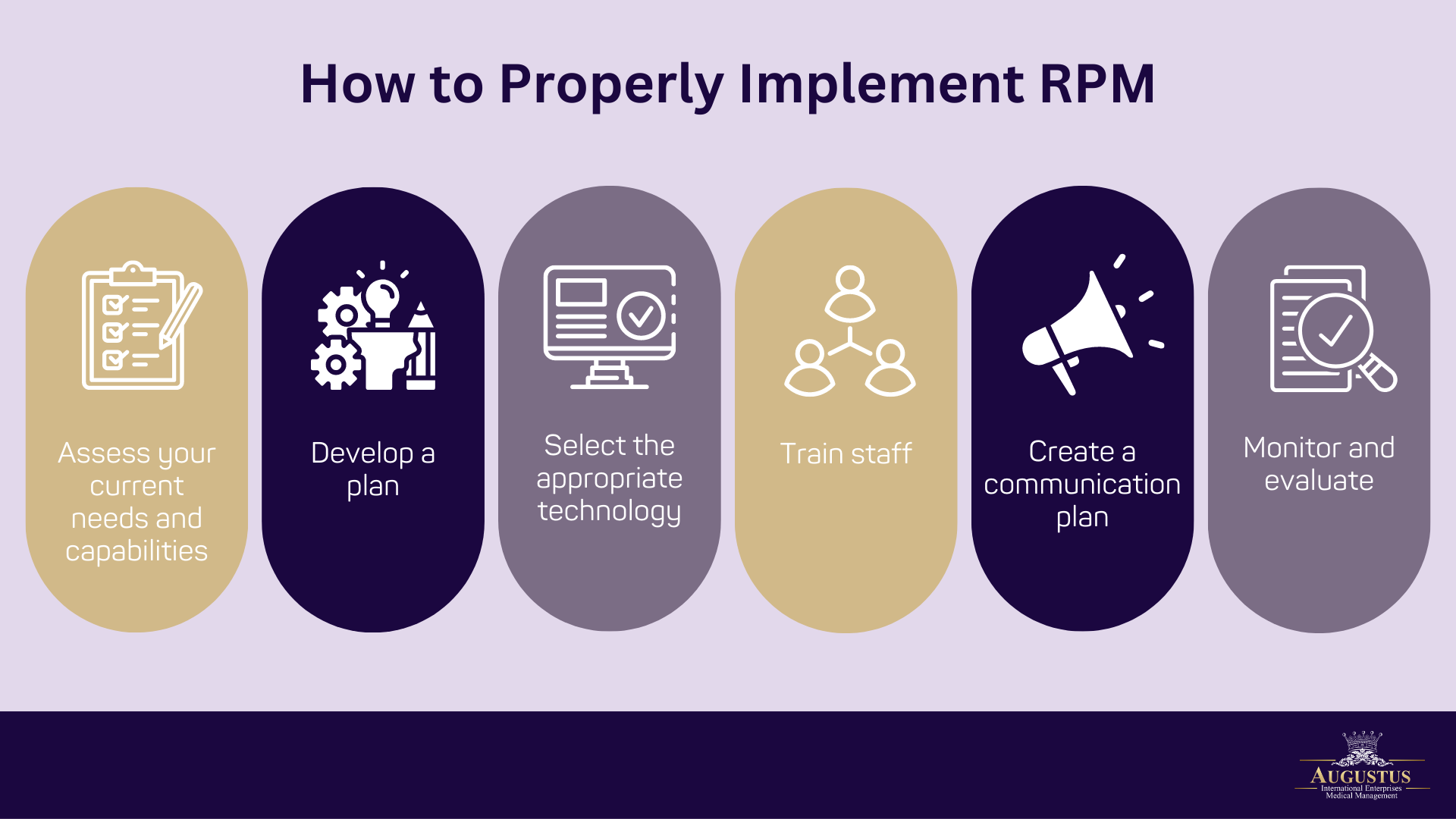
During the past two years there has been a lot of conversation about remote patient monitoring. Implementing remote patient monitoring (RPM) in a medical practice can bring many benefits, such as improved patient outcomes and cost savings. However, it’s important to approach the implementation process thoughtfully and with a plan in place. Here are some steps to help you properly implement RPM in your medical practice:
- Assess your current needs and capabilities: Before implementing RPM, it’s important to understand the needs of your patients and the capabilities of your practice. Identify the specific patient populations that could benefit from RPM and what types of monitoring would be most appropriate. Determine what technology and infrastructure you currently have in place and what will be needed to support RPM.
- Develop a plan: Once you have a clear understanding of your needs and capabilities, develop a plan for implementing RPM. This should include a timeline, budget, and detailed steps for implementation. The plan should also include strategies for training staff, integrating RPM into existing care processes, and addressing any potential barriers to implementation.
- Select the appropriate technology: There are a wide range of technologies available for RPM, from basic systems that track vital signs to more advanced systems that incorporate AI and machine learning. It’s important to select a system that meets the needs of your patients and is appropriate for the level of monitoring you plan to provide.
- Train staff: Staff training is critical for successful implementation of RPM. Ensure that staff are trained on how to properly use the technology, how to interpret and respond to the data, and how to communicate effectively with patients.
- Create a communication plan: Effective communication is key to successful RPM. Develop a plan for how you will communicate with patients and how they will communicate with you. This should include how patients will receive their data and how they will communicate with their care team.
- Monitor and evaluate: Once RPM is implemented, it’s important to regularly monitor and evaluate the program. Track patient outcomes, staff satisfaction, and costs to ensure that the program is meeting its goals. Use this information to make adjustments and improvements as needed.
Implementing RPM in a medical practice takes planning and effort, but it can bring many benefits for both patients and the practice. By following these steps, you can ensure that RPM is implemented in a way that is effective and efficient, bringing the best results for your patients and your practice.
AIE Medical management has extensive experience in establishing an effective remote patient monitoring program from software selection, staffing, support, and it’s effective billing. Contact us to learn more.